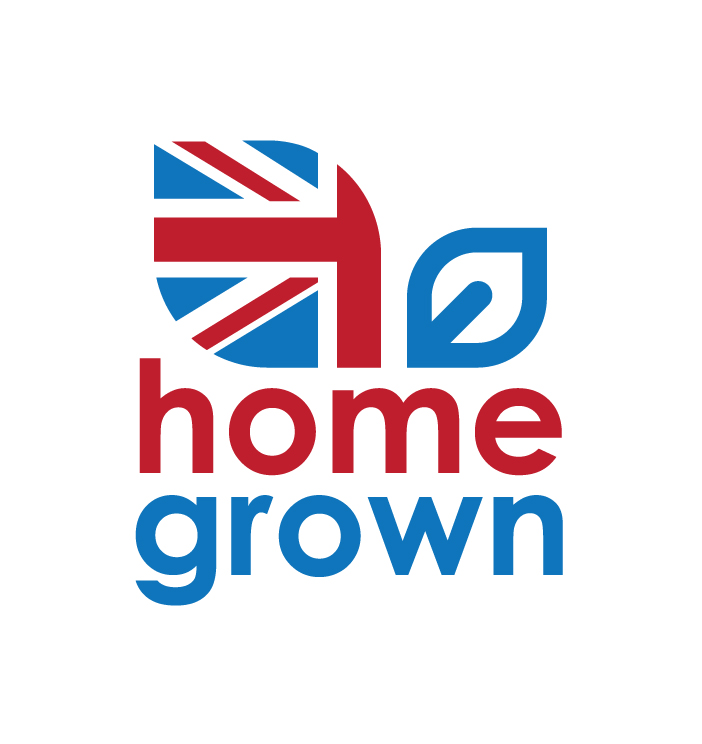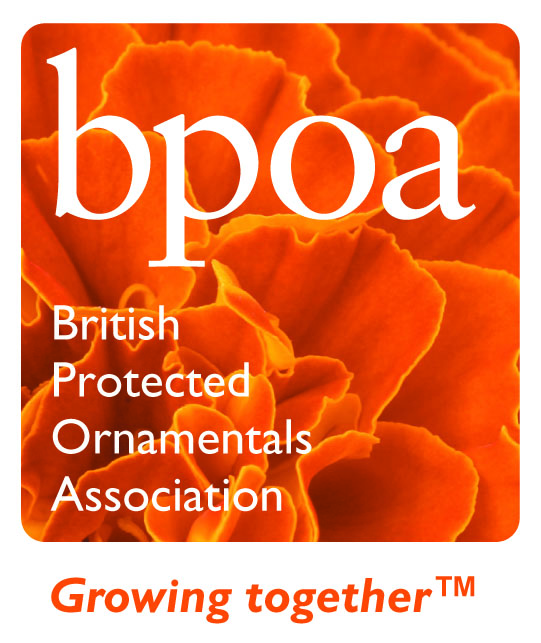How it all began
The Home Grown labeling scheme, which promotes ornamental plants grown on British nurseries, was launched by the British Ornamentals Association (BOA) in February 2011.

The idea for the scheme originally came from National Farmers Union (NFU) member nurserymen, Morris May and Bill Godfrey, supported by their local NFU branch, who wanted to tap into consumer interest in local produce. Home Grown received pump-priming funding from the South East England Development Agency (SEEDA), then HDC supported its development into a label that growers could use in their marketing.
Drawing on the marketing expertise of the committee, NFU and of Morris May & Bill Godfrey, the logo was redesigned to enhance its appeal. The criteria for Home Grown were also reviewed and a process has been developed to ensure compliance by users of the logo. Scheme membership has been made cost effective, to help widen the appeal of Home Grown. Finally, a marketing strategy was developed that aims to make Home Grown the leading scheme to distinguish British-grown ornamentals, with a logo recognised throughout the country by growers, retailers and gardeners.
In summer 2011, the Home Grown logo was successfully registered as a trade mark. The registered trade mark is a great step forward for Home Grown and will serve to further protect, differentiate and add-value to the scheme.
Home grown award 2017
Garden centre of the year award 2017
Presented to Tates Garden Centres

Home Grown Scheme
Home Grown – Mark and Labelling Scheme for businesses producing ornamental horticulture products / plants, which primary function is to identify their ‘home grown’ or local nature (a provenance mark).
“A Home Grown product is one that has undergone a modification and growing process with the input of substantial horticultural management and skill in the UK.”
Clarifications:
- A ‘Home Grown’ product’s origin must be traceable to the grower/ producer who must be part of the Scheme.
- An applicant for the Scheme must be registered by the BOA and sign an agreement to the principles of the Code of Practice. Upon completion of this procedure, the mark (image files etc) will be distributed from the Executive Office directly to the Scheme Member who may then pass the information to the printer advising them of the contract terms and obligations, already agreed, which govern the use of the mark.
- It was agreed that young plants and seedlings would not normally be labelled with the mark for traceability reasons. The Home Grown mark is only applicable to plants/ products ready for retail.
- Any query regarding the status of propagation material, part finished plants imported from outside the UK or products comprising plants of varying origin, is to be referred to the Executive Officer.
How to use Home Grown Labels and Marks Scheme
Email info@homegrownplants.org.uk or write to BOA at the postal address:
BOA, BGA House, Nottingham Road, Louth, Lincolnshire LN11 0WB
- You will be supplied with an application form which you complete with details of your business and the use you propose for the mark.
- You will be required to sign this agreement to signify your assent to the Code of Practice and self audit procedure also the rules governing the reproduction of the mark.
- The completed application should be forwarded to BOA and upon receipt you will receive an acknowledgement.
- Once the application has been accepted and approved you will receive a pack with further information including you certificate of registration and Scheme reference number.
- The image files will be distributed by email to you.
The Application form should also have with it the notes covering the 4 principles of the Home Grown code of practice and the rules governing the reproduction of the mark and a brief description of the self audit procedure, see :
If you wish you can also download this document here:
Usage guidelines – the logo
There are many benefits from adopting the Home Grown logo on your plant labels and marketing material not least the creation of one symbol that consumers will come to recognise whatever part of the country they live in as standing for British grown plants.
These guidelines have been created to ensure that these benefits are realised through the consistent and controlled use of the Home Grown logo by growers throughout the country.
Permitted use of the logo
The logo is only to be used in the formats shown in this document. All Home Grown logo artwork is available as eps, jpeg or png files from the BOA.
Not permitted
- stretching or scaling the logo disproportionately
- reversing out of a coloured background
- altering colours
- moving the leaf/flag icon in relation to the text
- using the leaf/flag icon without text
Usage guidelines – plant labels
Growers are permitted to include their business name and location/address on the label with the Home Grown logo. There are no requirements for the typeface or colour of this text. We recommend using a standard san serif typeface such as Arial, and keeping the text in black or the Home Grown blue. This gives the text clear visibility and complements the Home Grown logo. The Home Grown logo typeface is Century Gothic Bold.
Grower-specific text
Text recommended be updated to the following specifications:
Business name and address text recommended be set as Arial Bold or Century Gothic Bold in black or Home Grown blue centred under logo, with business name and location/address split onto two separate lines.
Home Grown colours
Pantone references RED= Pantone 703C C=15 Y=100 M= 90 K=10
R=190 G=30 B=45
BLUE = Pantone 285C C=85 Y=50 M=0 K=0
R=85 G=117 B=188
Logo application – plant labels
Logo positioning on labels – the logo can be centred, positioned left or right, depending on space available. The logo must have a clear space surrounding all sides, no less than 1mm. The minimum width of the logo is 9mm.
Logo application – marketing and promotional
Use of standard logo – this logo can be used in all forms of marketing, promotional, advertising and stationery. The logo can be centred, positioned left, or positioned right, depending on space available. The logo must have a clear white space surrounding all sides, no less than 6mm. The minimum width for the logo is 15mm.
The usage guidelines may be downloaded here:
